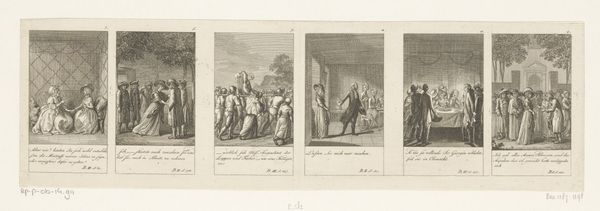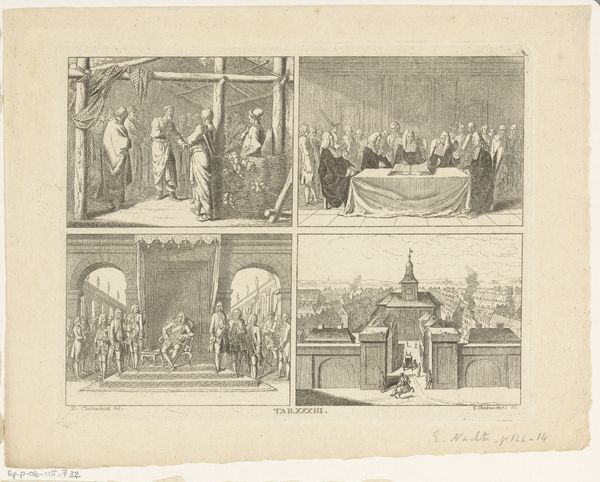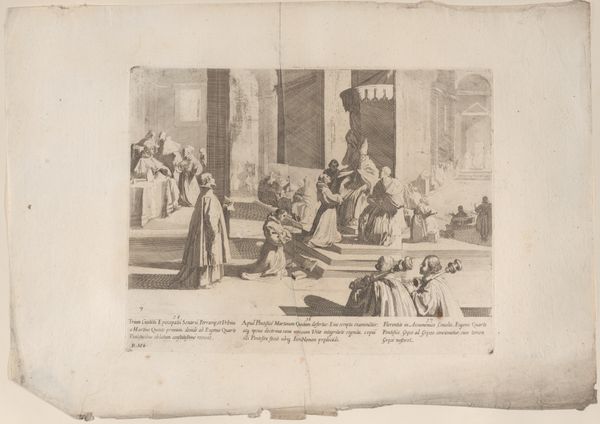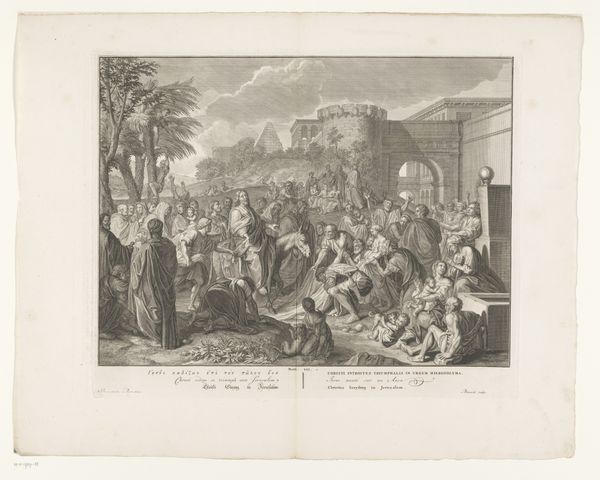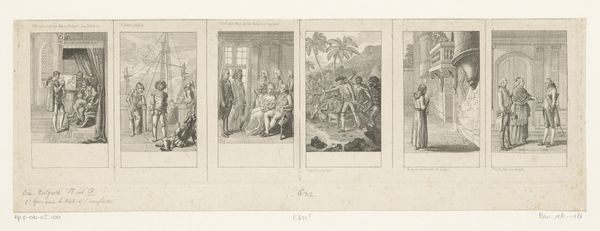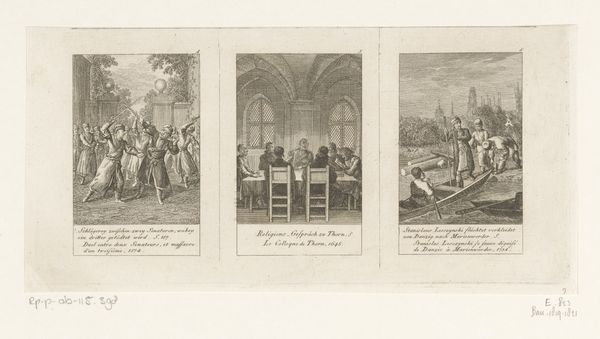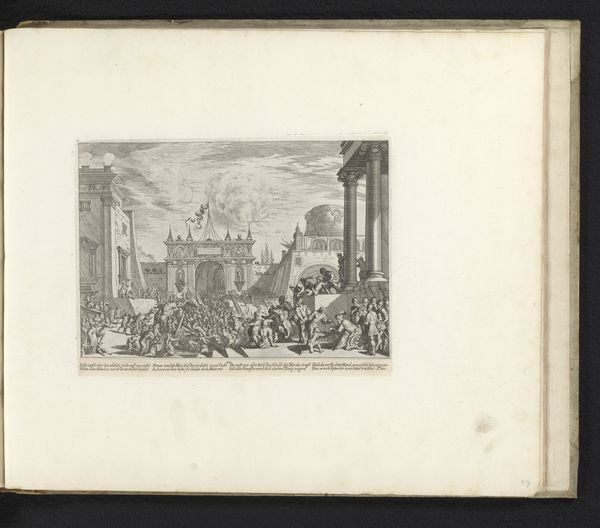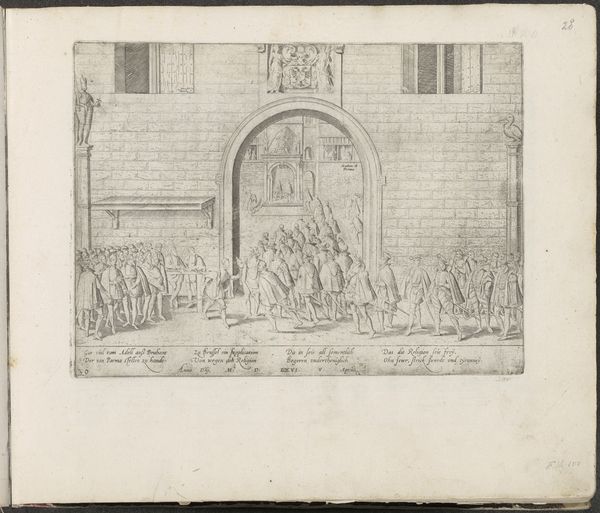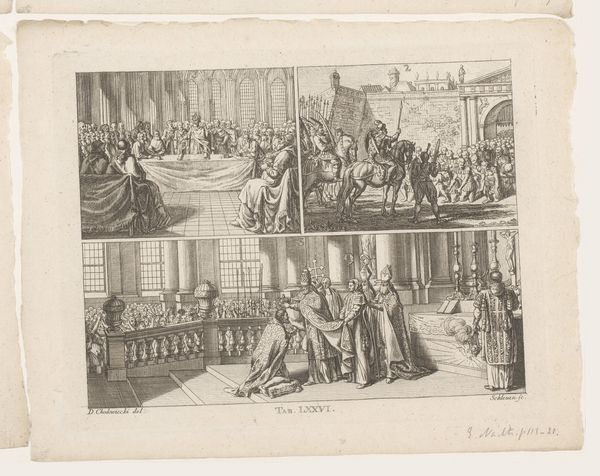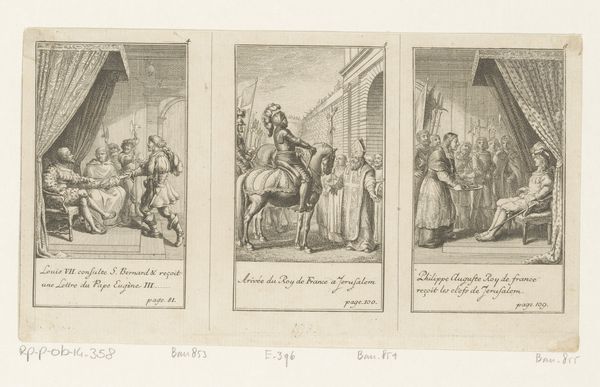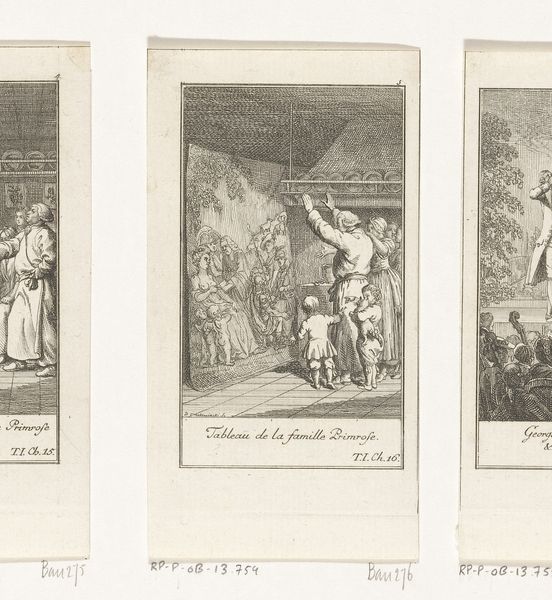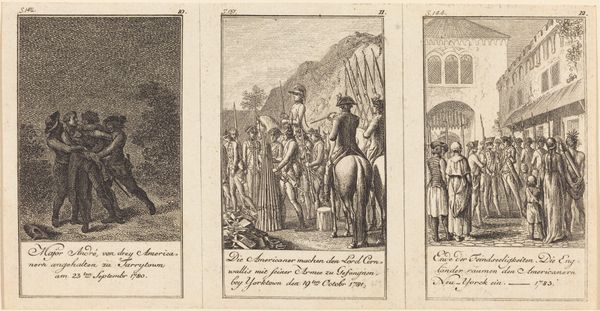
Dimensions: height 180 mm, width 232 mm
Copyright: Rijks Museum: Open Domain
Editor: This is "Openbare straffen" or "Public Punishments," an engraving made around 1770 by Daniel Nikolaus Chodowiecki, currently held at the Rijksmuseum. The composition, divided into four scenes, depicts different forms of 18th-century punishments, and evokes feelings of oppression and injustice. What visual symbols stand out to you the most, Curator? Curator: Well, the division into quadrants itself is quite symbolic, isn’t it? It compartmentalizes the acts, perhaps suggesting the systematic nature of justice – or rather, punishment – during that era. The presence of legal and military entities in the image’s upper panels can remind us of social hierarchies of Baroque Europe. The public nature of each punishment, displayed as theater, indicates the intention of control via fear. Editor: Theater? Control? I never saw it that way before. Curator: Consider the way the figures are arranged, almost posed. Notice also how different social classes watch the executions as entertainment in panel three. What kind of collective psychological effect do you think this "spectacle" aimed to provoke? Editor: I suppose the image displays the era's societal power structures. So, it shows an unbalanced scale of justice... Did this piece attempt to change people's beliefs or actions? Curator: Chodowiecki, like many artists of his time, engaged with the Enlightenment ideals. The print implicitly questions the barbarity of public punishments. Each image represents a decline from law to spectacle: From the legal court to the cruel outcome. Even the architectural structures—gateways and prisons—become symbols of confinement, both physical and societal. What does this all mean for you? Editor: The division into boxes creates a comparison—it reveals the transformation of law into pure cruelty in public life. I thought of this piece as a historical artifact, but I now understand the lasting social symbolism within it. Curator: Precisely. The engraving preserves and transmits collective cultural memory—continuing to spark discourse and ethical judgment.
Comments
No comments
Be the first to comment and join the conversation on the ultimate creative platform.
